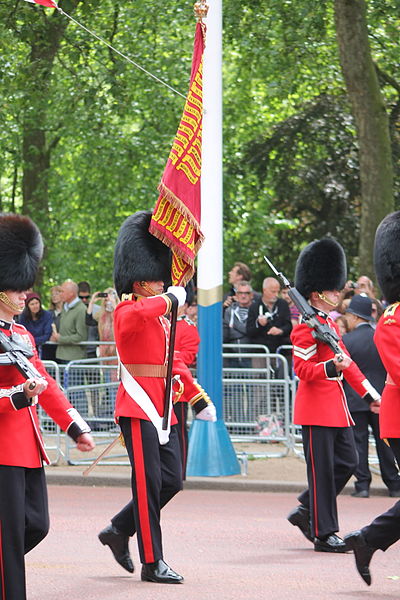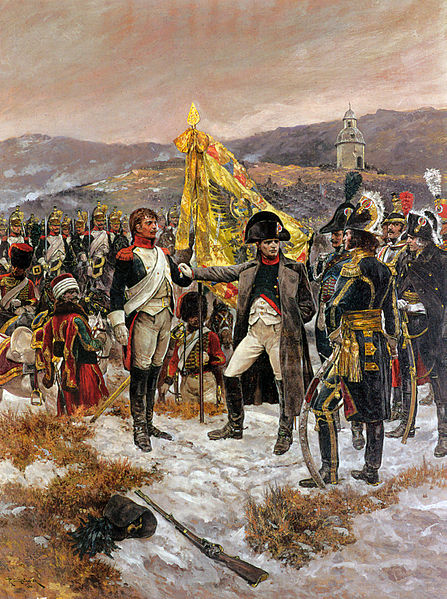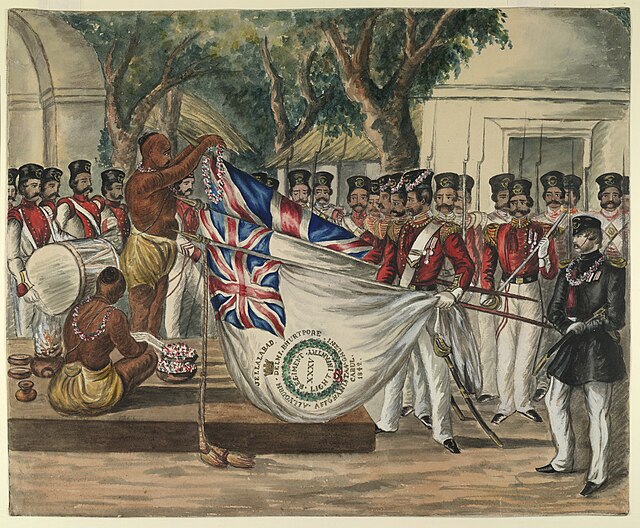A battle honour is an award of a right by a government or sovereign to a military unit to emblazon the name of a battle or operation on its flags ("colours"), uniforms or other accessories where ornamentation is possible.
The regimental colours of the 5th Royal Inniskilling Dragoon Guards, displaying the battle honours awarded to the regiment.
A carved board displaying the battle honours carried by the cruiser HMAS Hobart. The battle honours (and the campaigns they were earned for) are: • MEDITERRANEAN 1941 (Battle of the Mediterranean) • SAVO ISLAND 1942 (Battle of Savo Island) • PACIFIC 1945 (Pacific War) • GUADALCANAL 1942-3 (Guadalcanal Campaign) • CORAL SEA 1942 (Battle of the Coral Sea)
Military colours, standards and guidons
In military organizations, the practice of carrying colours, standards, flags, or guidons, both to act as a rallying point for troops and to mark the location of the commander, is thought to have originated in Ancient Egypt some 5,000 years ago. The Roman Empire also made battle standards reading SPQR a part of their vast armies. It was formalized in the armies of Europe in the High Middle Ages, with standards being emblazoned with the commander's coat of arms.
The Grenadier Guards colours
Stitching the Standard by Edmund Leighton (1911), oil on canvas.
Napoleon I awarding the Legion d'Honneur to a dragoon for the capture of an Imperial regimental flag.
Watercolour painting showing a Hindu priest garlanding the regimental colours of the 35th Bengal Light Infantry, a regiment of the Bengal Native Infantry in the Army of East India Company's Bengal Presidency in c. 1847 (British Library)






